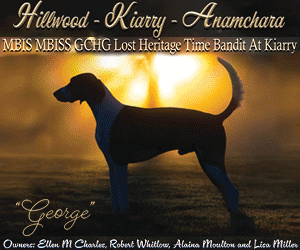The Iditarod & HSUS – A Lesson in Negotiation

By Amy Fernandez
The 2013 Iditarod is winding down to the last leg from Unalakleet to Nome. It kicked off March 2 and diehard fans can follow every mile via GPS and webcam. Even if are not a devotee, you are probably familiar with it. Since its beginning in 1967, it’s grown into an international extravaganza. It’s Alaska’s biggest sporting event, and competitors and fans come from all over the world. Sixty-six teams started this year’s race, including Newton Marshall, Jamaica’s first professional musher.
Mushing emerged as a local sport during the Gold Rush. Today it is entrenched in Alaskan culture. The Iditarod began as part of a statewide celebration commemorating the 1867 purchase of Alaska. Named the Iditarod Trail Leonhard Seppala Memorial Race, it was meant to honor dogs and mushers instrumental in settling the Alaska territory.
The legendary 1925 serum run from Anchorage to the Bering Sea town of Nome inspired the route, and the Athabascan word Haiditarod (far, distant place) inspired the name. And that’s a pretty fair assessment of the 1100 mile grueling test of brains, stamina, and canine athleticism in subzero temps and brutal conditions. Even seasoned competitors regularly confront unforeseen, deadly challenges.
The top teams make it in 9-11 days. The last stragglers arrive in 15-16 days. The route is monitored by bush pilots, food and supplies are cached at check points, and 35 veterinarians examine dogs throughout the race.

The payoff for this punishing ordeal is quite modest in comparison to many sports. The biggest Iditarod purse in 2004 topped $700,000. The top 30 finishers get a percentage of this year’s $600,000. Other finishers receive $1,049. The winner also gets a new truck, and top mushers earn additional income via endorsements. But it’s fair to say that nobody does this for the money.
Entry fees, transportation, and associated expenses run $20,000 to $30,000 depending upon the number of dogs and handlers on the team. This may look like a rough and ready sport, but don’t kid yourself. Plan to pony up 30-40k for a competitive team. Top quality, lightweight racing gear isn’t cheap either. And if you live in Alaska, add 40 percent to the price of all the regular dog expenses. Despite this, entries keep growing.
That’s disappointing news for HSUS. For decades their vociferous criticism of the Iditarod fueled lucrative donation drives. In the early 1990s the Iditarod Trail Committee fell into a trap that snares plenty of groups when they are attacked by AR groups. They decided to be civilized, negotiate, and make concessions to quell criticism. The Trail Committee accepted an HSUS representative. Logically, this sensible measure was meant to provide an insider’s look at the sport and convince HSUS of their commitment to dog welfare.
Instead, HSUS capitalized on the Iditarod’s fundraising potential while continuing its negative propaganda. They pressured Chrysler, Iams, Timberland, and ABC’s Wide World of Sports to abandon the event. Like all sports, mushing has some unsavory characters, and HSUS turned every incident into a media circus… even though they were officially involved and benefitting from the arrangement. None of this fits the general concept of negotiating a truce.
But something good came of this untenable situation. The Iditarod Trail Committee initiated policies to disprove HSUS allegations. Safety regulations were reinforced, severe penalties imposed for mistreatment of dogs, publicity campaigns focused on their health and care. Finally, they severed ties with HSUS in 1995.

HSUS continues to slam the race, but new sponsors came onboard like Cabela’s, General Communication Inc., and Wells Fargo. The PBS Nature special Sled Dogs: An Alaskan Epic attracted legions of new fans and it continues to get national media coverage. Most importantly, the Iditarod Trail Committee learned a tough lesson. Negotiating with AR groups is pointless. Nihilists never settle for compromise solutions.
Short URL: http://caninechronicle.com/?p=17727
Comments are closed











